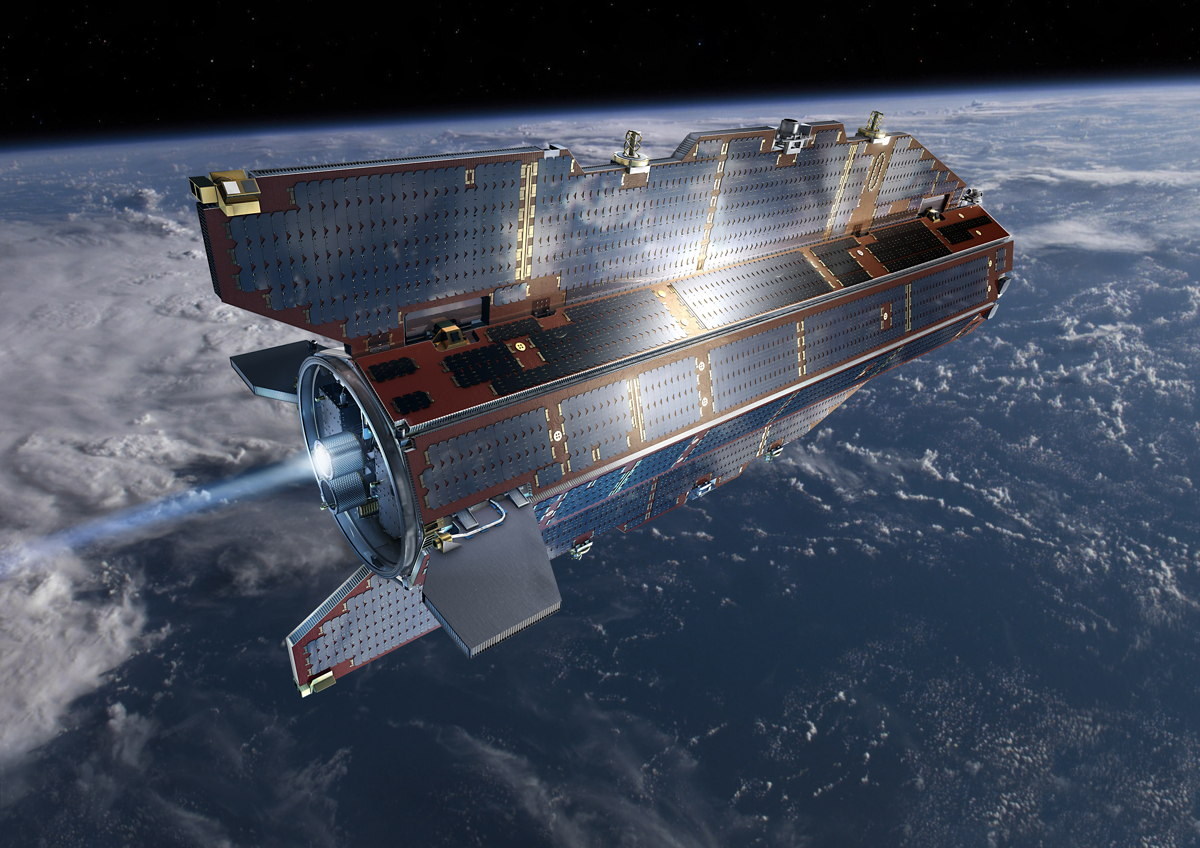'Ferrari of Space' Doomed: Satellite Will Fall from Space in October

A European satellite is facing a fiery doom next month, when it is expected to begin falling from space to end a successful mission to map Earth's gravity. The spacecraft runs out of fuel in October, but exactly when and where it will fall to Earth isn't yet known.
The fiery re-entry of the Gravity field and steady-state Ocean Circulation Explorer (GOCE) satellite, which the European Space Agency has billed as the "the Ferrari of space," will occur about two or three weeks after the satellite runs out of fuel in mid-October, ESA officials said.
"The affected area will be narrowed down closer to the time of re-entry," ESA officials explained in a statement. "Taking into account that two-thirds of Earth are covered by oceans and vast areas are thinly populated, the danger to life or property is very low." [6 Biggest Spacecraft to Fall Uncontrolled From Space]
About 40 metric tons of human-made space debris rains on to Earth every year, but the risk of any of it hitting somebody is lower than being smacked by a meteorite, ESA added.
The $450 million gravity-mapping GOCE satellite launched in March 2009, with ESA dubbing it "the Ferrari of space" due to the satellite's aerodynamic design, which was required to counteract the drag of atmospheric particles whizzing by in its low orbit around Earth. The satellite skims above Earth at an altitude of just 139 miles (224 kilometers). By comparison, the International Space Station orbits at about 249 miles (400 kilometers).
The satellite was designed to work for two years, and in that timeframe it produced the most accuratemodel of Earth's gravityfieldever seen. GOCE also produced the first high-resolution map of the boundary between Earth's crust and mantle.
Most of the satellite is expected to disintegrate in the Earth's atmosphere, but ESA said some large pieces could reach the surface. Its space debris office is monitoring the satellite's orbit and will provide risk assessments and re-entry predictions closer to GOCE's expected fall from orbit.
Get the Space.com Newsletter
Breaking space news, the latest updates on rocket launches, skywatching events and more!
There have been several instances of human-made space objects falling back to Earth.
In 2011, for example, global attention focused on the demise of NASA's defunct Upper Atmospheric Research Satellite (UARS), which hit the Pacific Ocean. Debris from NASA's Skylab space station rained on Australia in 1979, and Russia's Mir space station reportedly generated sonic booms in 2001 as it fell in the ocean within sight of beachgoers in Fiji.
Follow Elizabeth Howell @howellspace, or SPACE.com @Spacedotcom. We're also on Facebook and Google+. Original article on SPACE.com.
Join our Space Forums to keep talking space on the latest missions, night sky and more! And if you have a news tip, correction or comment, let us know at: community@space.com.

Elizabeth Howell (she/her), Ph.D., was a staff writer in the spaceflight channel between 2022 and 2024 specializing in Canadian space news. She was contributing writer for Space.com for 10 years from 2012 to 2024. Elizabeth's reporting includes multiple exclusives with the White House, leading world coverage about a lost-and-found space tomato on the International Space Station, witnessing five human spaceflight launches on two continents, flying parabolic, working inside a spacesuit, and participating in a simulated Mars mission. Her latest book, "Why Am I Taller?" (ECW Press, 2022) is co-written with astronaut Dave Williams.









